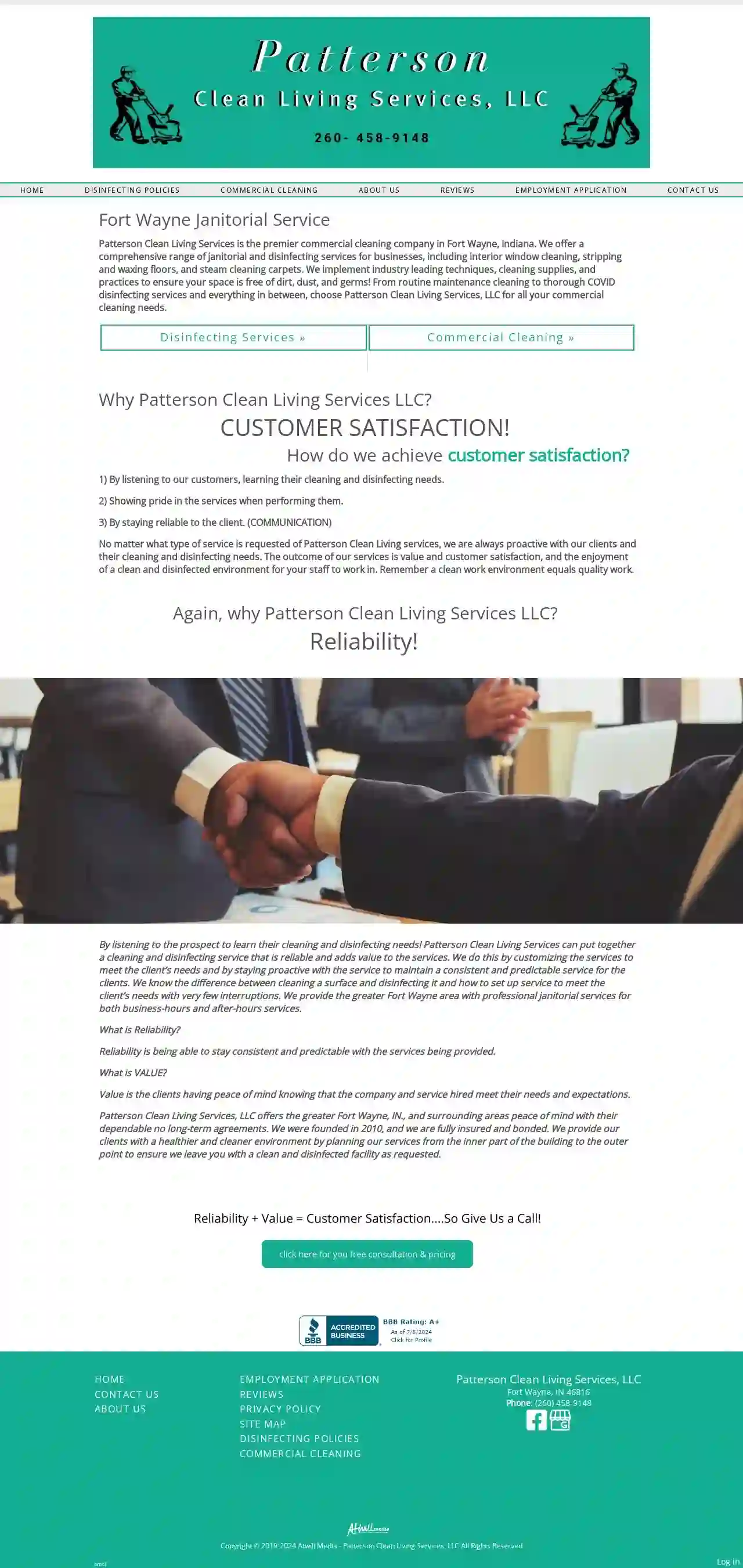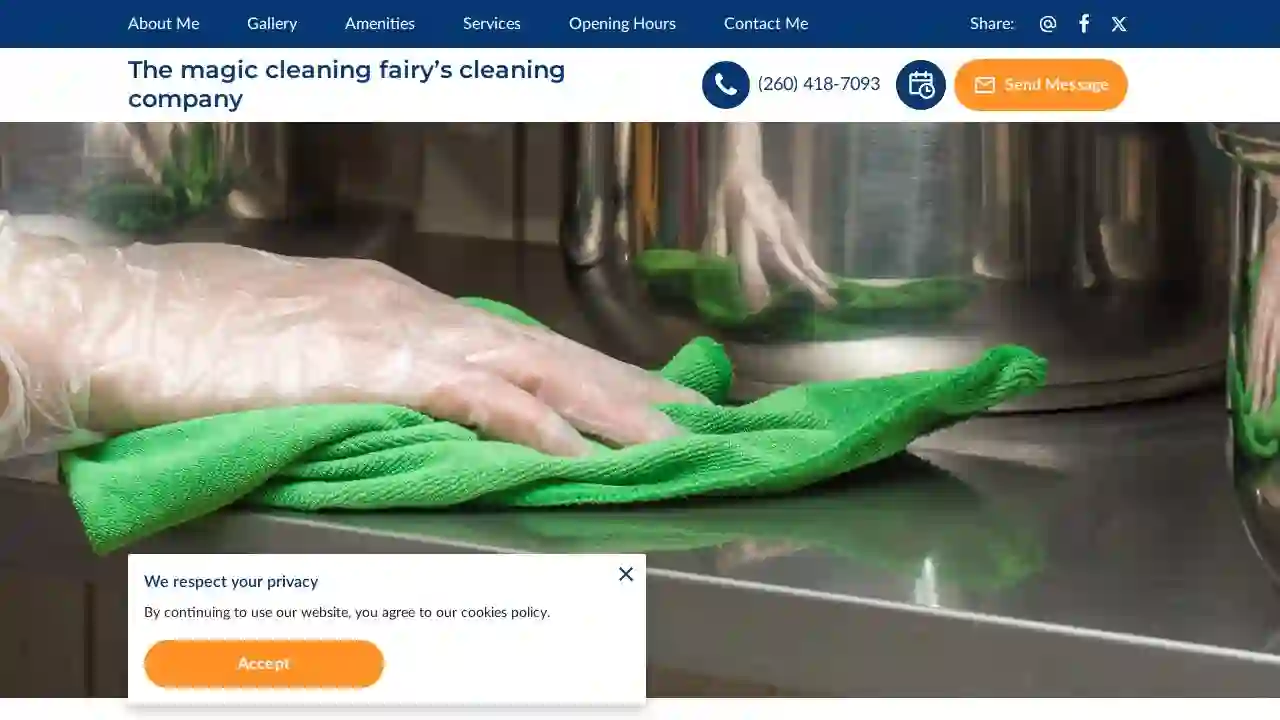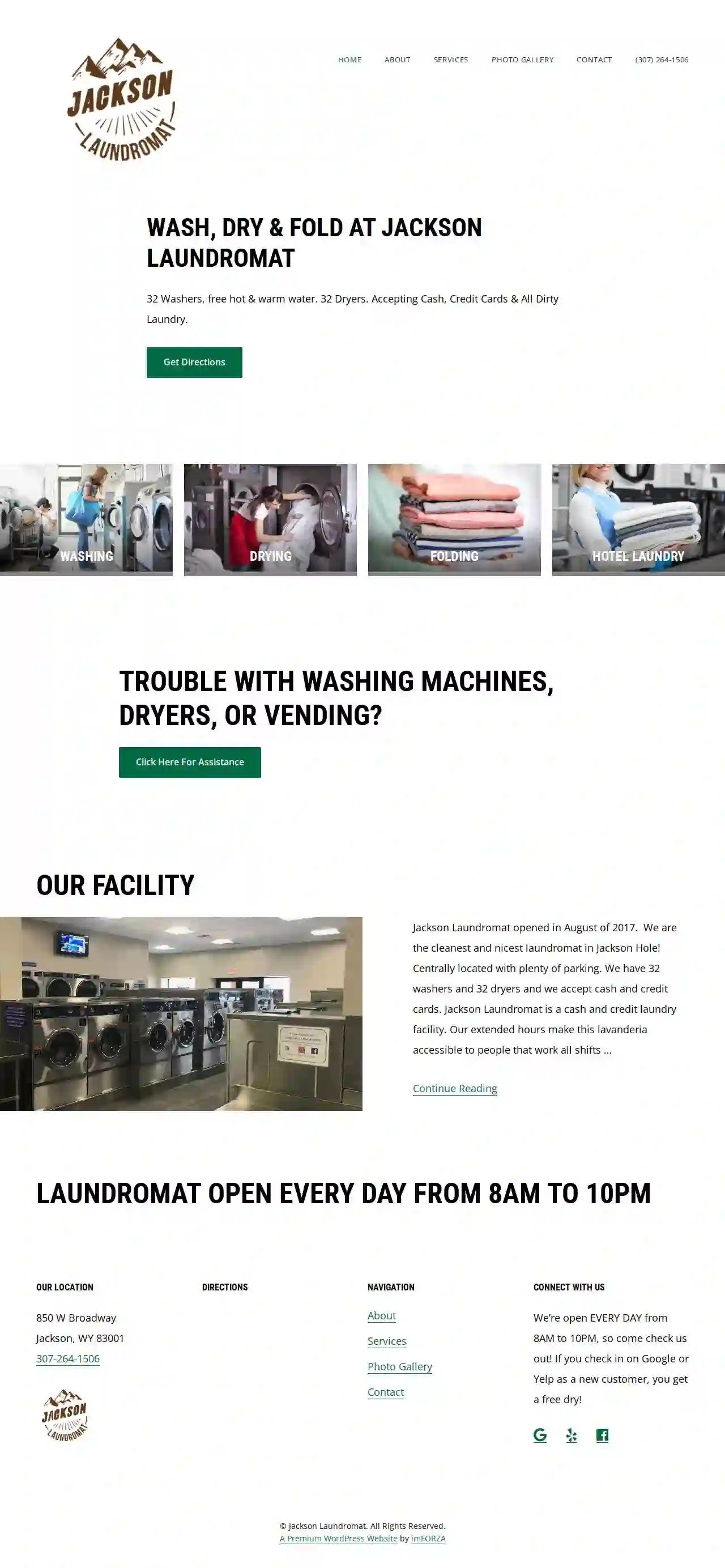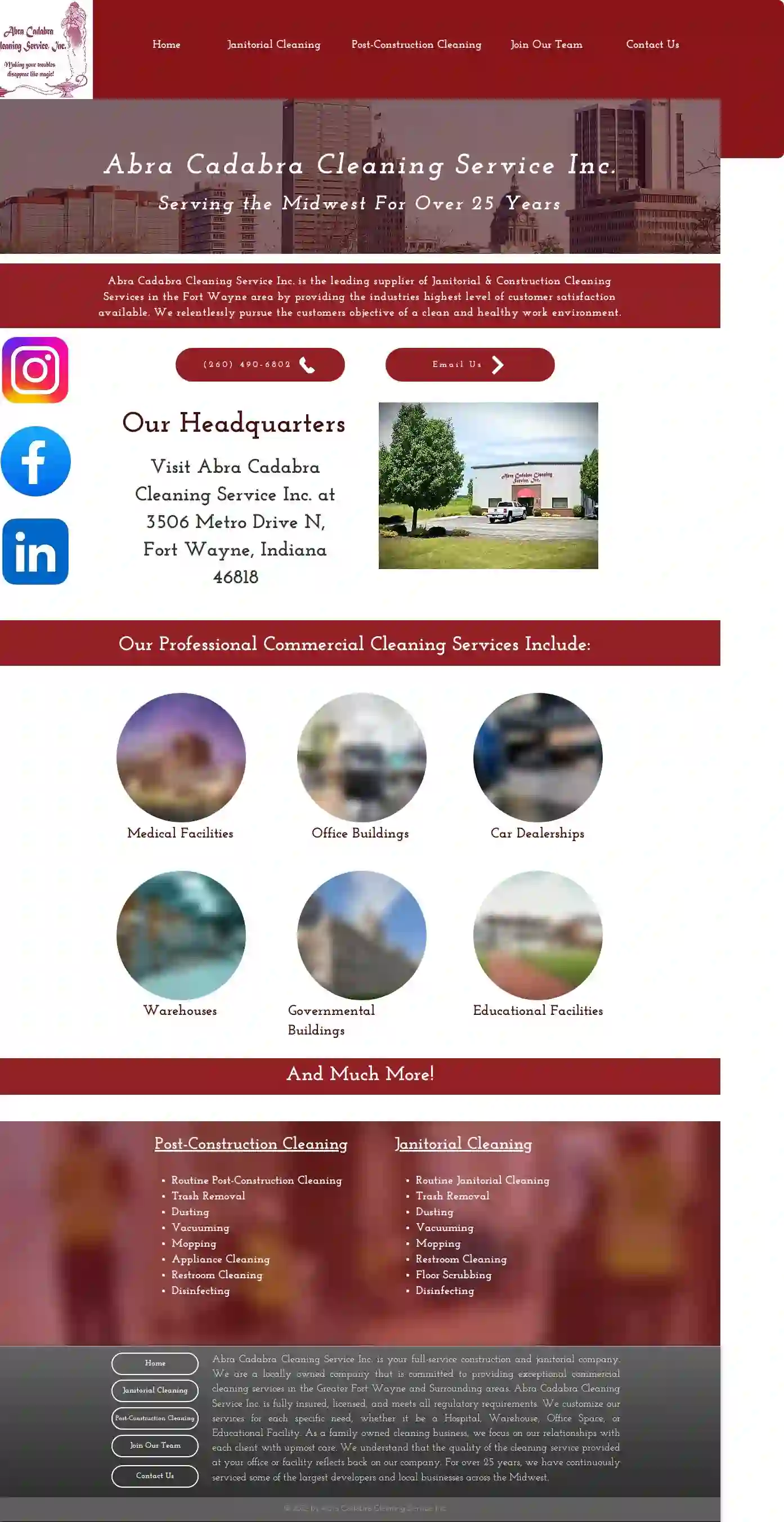Cleaning Services Ventnor City
Find Cleaning in Ventnor City
Get multiple Cleaning Services quotes for your project today! Compare profiles, reviews, accreditations, portfolio, etc... and choose the best offer.

Patterson Clean Living Services, LLC
4.97 reviewsWayne, US- Services
- Why Us?
- Gallery
Get Quote
SERVPRO of South Jersey City/Bayonne
4.619 reviewsJersey City, US- Services
- Why Us?
- Gallery
Get Quote
Ready Clean
514 reviewsPaterson, US- Services
- Why Us?
- Gallery
Get Quote
JH22 Cleaning Services
516 reviewsJackson, USPremium Cleaning Services in Jackson Hole JH22, LLC is a professional property service company catering specifically to residential cleaning, commercial cleaning and various home improvement services. Our mission is simple; to provide top quality, eco-friendly & cost effective home services consistently. Long term business is what we strive for.
- Services
- Why Us?
- Testimonials
- Gallery
Get Quote- Pu
Pure Clean and Simple
123 Clean St, Simple City, SC, 12345, USPure Clean and Simple is a cleaning service dedicated to providing top-notch cleaning solutions to its clients. With a focus on customer satisfaction and quality service, the company strives to make every home and office a clean and comfortable space.
- Services
- Why Us?
- Accreditations
- Our Team
- Testimonials
- Gallery
Get Quote 
The magic cleaning fairy’s cleaning company
Fort Wayne, USAt The Magic Cleaning Fairy's Cleaning Company, we take the hassle out of cleaning. No matter the size of your home, our trained domestic cleaners work to the highest standard and will leave it sparkling. Located in Fort Wayne, we also offer a range of specialist cleaning services, including end of tenancy cleaning, after party cleaning, and carpet cleaning. Call us today on +1 260 418 7093 to discuss your cleaning requirements. Ready for some shine? Our specialist team of trained cleaners are ready at short notice, to visit your property and address your cleaning requirements. We pride ourselves on using industry-leading products and techniques to leave your home or office sparkling. Whether you're seeking end of tenancy cleaning or after party cleaning, we guarantee a rapid and efficient service, leaving you free to do other things. Take a look at our list of cleaning solutions now and choose the right option for your property.
- Services
- Why Us?
Get Quote
Maid in JC
4.9522 reviews88 Brunswick Street, Jersey City, 07302, USMAID IN JC is a green, Jersey City, home cleaning service that is committed to making your life Better, Greener & Cleaner. We've been servicing downtown Jersey City since 2014 with a maid service you can trust to clean your apartment or condo. Leave the house cleaning to us and get back to doing much better things. We're located at 88 Brunswick Street, Jersey City, NJ 07302 and have been servicing Downtown Jersey City with home cleaning service since 2014. Please feel free to pay us a visit soon!
- Services
- Why Us?
- Our Team
- Testimonials
- Gallery
Get Quote
Jackson Laundromat
4.3222 reviewsJackson, US- Services
- Why Us?
- Gallery
Get Quote
Abra Cadabra Cleaning Services Inc
3.616 reviews3506 Metro Drive N, Fort Wayne, 46818, USAbra Cadabra Cleaning Service Inc. is the leading supplier of Janitorial & Construction Cleaning Services in the Fort Wayne area by providing the industries highest level of customer satisfaction available. We relentlessly pursue the customers objective of a clean and healthy work environment.
- Services
- Why Us?
- Gallery
Get Quote
Gulf South Janitorial LLC
522 reviewsJackson, US- Services
- Why Us?
- Gallery
Get Quote
Over 60,241+ Cleaning Businesses on our platform
Our janitorial services operate in Ventnor City and surrounding areas!
CleaningMatch has curated and vetted the Best Cleaning Businesses in Ventnor City. Find a trustworthy contractor today.
Frequently Asked Questions About Cleaning Services
- Ventilation: Improve ventilation by opening windows, turning on the exhaust fan, and using a dehumidifier to reduce moisture levels.
- Bleach Solution: Mix one cup of bleach with one gallon of water. Wear gloves and eye protection when handling bleach. Apply the solution to the affected area, let it sit for 10-15 minutes, then scrub with a brush and rinse thoroughly.
- Vinegar Solution: For a milder alternative, mix equal parts water and vinegar. Apply to the moldy area, let it sit for an hour, then scrub and rinse.
- Baking Soda Paste: Make a paste of baking soda and water, apply to the moldy area, let it dry, then scrub and rinse. Baking soda helps remove stains and deodorize.
- Commercial Mold and Mildew Remover: Use a commercial mold and mildew remover according to the product instructions.
- Using the wrong cleaning products: Certain cleaning products are unsuitable for specific surfaces. Using abrasive cleaners on delicate surfaces can cause scratches or discoloration.
- Not reading product instructions: Always read and follow the instructions on cleaning products to ensure proper usage and avoid potential hazards.
- Using dirty cleaning tools: Dirty cloths, sponges, and mops can spread germs and dirt instead of cleaning them. Rinse and sanitize your cleaning tools regularly.
- Skipping ventilation: Proper ventilation is essential when using cleaning products, especially those with strong fumes. Open windows and doors to allow fresh air circulation.
- Not allowing sufficient drying time: After cleaning, allow surfaces to dry completely to prevent mold and mildew growth, particularly in humid areas like bathrooms.
- Ignoring clutter: Clutter makes cleaning more difficult and time-consuming. Declutter regularly to maintain a cleaner and more organized home.
- Experience: 'How long have you been in business, and what type of cleaning services do you specialize in?'
- Licensing and Insurance: 'Are you licensed, insured, and bonded? Can I see proof of coverage?'
- Background Checks: 'Do you conduct background checks on your employees?'
- Cleaning Supplies: 'Do you provide your own cleaning supplies and equipment, or should I provide them?'
- Cleaning Methods: 'What cleaning methods and products do you use?'
- References: 'Can you provide references from previous clients?'
- Scheduling and Availability: 'What days and times are you available for cleaning?'
- Pricing and Payment: 'What is your pricing structure, and what payment methods do you accept?'
- Cancellation Policy: 'What is your cancellation policy?'
- Satisfaction Guarantee: 'Do you offer a satisfaction guarantee? What happens if I'm not happy with the service?'
- Cleaning: Removing dirt, dust, and debris from surfaces using soap or detergent and water. It improves the appearance and removes visible contaminants.
- Sanitizing: Reducing the number of bacteria on surfaces to a safe level. It uses chemical disinfectants or heat to kill or inactivate bacteria.
- Disinfecting: Killing or inactivating most disease-causing microorganisms on surfaces. It uses stronger chemical disinfectants than sanitizing and targets a wider range of pathogens.
How do I remove mold and mildew from my bathroom?
Always test any cleaning solution on a small, inconspicuous area first. After cleaning, take steps to prevent future mold growth by addressing moisture issues, such as fixing leaks and improving ventilation.
What are some common cleaning mistakes to avoid?
By avoiding these common cleaning mistakes, you can improve your cleaning efficiency and achieve better results.
What should I ask a cleaning service before hiring them?
By asking these questions, you can assess their professionalism, reliability, and suitability for your cleaning needs.
What is the difference between cleaning, sanitizing, and disinfecting?
Cleaning is usually the first step, followed by sanitizing or disinfecting depending on the level of hygiene required.
How do I remove mold and mildew from my bathroom?
- Ventilation: Improve ventilation by opening windows, turning on the exhaust fan, and using a dehumidifier to reduce moisture levels.
- Bleach Solution: Mix one cup of bleach with one gallon of water. Wear gloves and eye protection when handling bleach. Apply the solution to the affected area, let it sit for 10-15 minutes, then scrub with a brush and rinse thoroughly.
- Vinegar Solution: For a milder alternative, mix equal parts water and vinegar. Apply to the moldy area, let it sit for an hour, then scrub and rinse.
- Baking Soda Paste: Make a paste of baking soda and water, apply to the moldy area, let it dry, then scrub and rinse. Baking soda helps remove stains and deodorize.
- Commercial Mold and Mildew Remover: Use a commercial mold and mildew remover according to the product instructions.
Always test any cleaning solution on a small, inconspicuous area first. After cleaning, take steps to prevent future mold growth by addressing moisture issues, such as fixing leaks and improving ventilation.
What are some common cleaning mistakes to avoid?
- Using the wrong cleaning products: Certain cleaning products are unsuitable for specific surfaces. Using abrasive cleaners on delicate surfaces can cause scratches or discoloration.
- Not reading product instructions: Always read and follow the instructions on cleaning products to ensure proper usage and avoid potential hazards.
- Using dirty cleaning tools: Dirty cloths, sponges, and mops can spread germs and dirt instead of cleaning them. Rinse and sanitize your cleaning tools regularly.
- Skipping ventilation: Proper ventilation is essential when using cleaning products, especially those with strong fumes. Open windows and doors to allow fresh air circulation.
- Not allowing sufficient drying time: After cleaning, allow surfaces to dry completely to prevent mold and mildew growth, particularly in humid areas like bathrooms.
- Ignoring clutter: Clutter makes cleaning more difficult and time-consuming. Declutter regularly to maintain a cleaner and more organized home.
By avoiding these common cleaning mistakes, you can improve your cleaning efficiency and achieve better results.
What should I ask a cleaning service before hiring them?
- Experience: 'How long have you been in business, and what type of cleaning services do you specialize in?'
- Licensing and Insurance: 'Are you licensed, insured, and bonded? Can I see proof of coverage?'
- Background Checks: 'Do you conduct background checks on your employees?'
- Cleaning Supplies: 'Do you provide your own cleaning supplies and equipment, or should I provide them?'
- Cleaning Methods: 'What cleaning methods and products do you use?'
- References: 'Can you provide references from previous clients?'
- Scheduling and Availability: 'What days and times are you available for cleaning?'
- Pricing and Payment: 'What is your pricing structure, and what payment methods do you accept?'
- Cancellation Policy: 'What is your cancellation policy?'
- Satisfaction Guarantee: 'Do you offer a satisfaction guarantee? What happens if I'm not happy with the service?'
By asking these questions, you can assess their professionalism, reliability, and suitability for your cleaning needs.
What is the difference between cleaning, sanitizing, and disinfecting?
- Cleaning: Removing dirt, dust, and debris from surfaces using soap or detergent and water. It improves the appearance and removes visible contaminants.
- Sanitizing: Reducing the number of bacteria on surfaces to a safe level. It uses chemical disinfectants or heat to kill or inactivate bacteria.
- Disinfecting: Killing or inactivating most disease-causing microorganisms on surfaces. It uses stronger chemical disinfectants than sanitizing and targets a wider range of pathogens.
Cleaning is usually the first step, followed by sanitizing or disinfecting depending on the level of hygiene required.